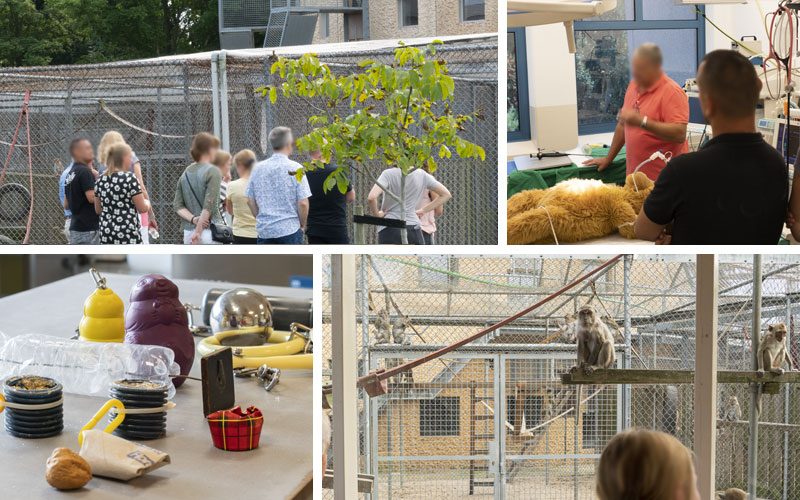Last Saturday we organized a familyday. Almost 200 family members and friends of colleagues took a look behind the scenes at BPRC.
During a morning and afternoon session we guided visitors in small groups around and showed them what we do at BPRC, how we do it and why.
Lectures on animal welfare of laboratory animals
We kicked off with two lectures. During the first lecture Jan introduced BPRC. He explained why monkeys are still necessary for biomedical research. He showed how our animals are housed and what we do to make their lives as good as possible. He also showed short movies of how we playfully train our animals to work with us during our research. In one of the movies we train common marmosets to voluntarily bite on a cotton bud, in exchange for a tasty treat. This way we can examine their saliva in the laboratory without having to sedate them.
Tuberculosis research
The second lecture gave the audience a glimpse in our tuberculosis research. One of the scientific staff members explained how PET/CT works and how we use this state of the art technique during our tuberculosis research program. She showed that PET/CT can provide valuable information of early disease manifestations after tuberculosis infection and that PET/CT will help us to further decrease the discomfort of our animals during tuberculosis research.
Guided tour
Monkeys living in the wild spend much of their time looking for food. Our animals do not need to, because we provide them with healthy and nutritious food throughout. But we do not want them to get bored. That is why we hide tasty snacks for them. Our guests saw with their own eyes why we ask the to save toilet paper rolls, small plastic bottles and muesli boxes, and how our colleagues transform these items into so called food puzzles. The tour also included our operating room and laboratories. But of course there was also plenty of time for monkey watching.


